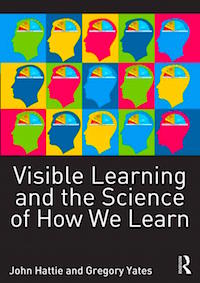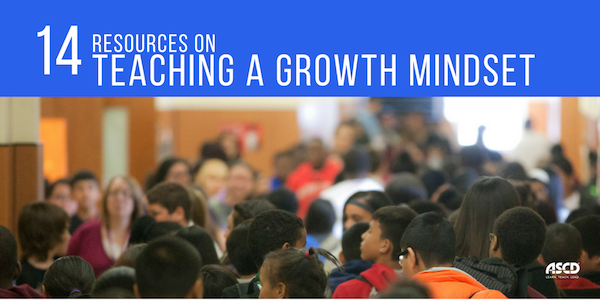 I’ve been re-reading Peter DeWitt’s provocatively titled EdWeek post from July 2015: “Why a Growth Mindset Won’t Work.” DeWitt is an advocate of the growth mindset concept and also an associate of famed learning scientist John Hattie (he left a principal job he loved to work with Hattie’s team).
I’ve been re-reading Peter DeWitt’s provocatively titled EdWeek post from July 2015: “Why a Growth Mindset Won’t Work.” DeWitt is an advocate of the growth mindset concept and also an associate of famed learning scientist John Hattie (he left a principal job he loved to work with Hattie’s team).
So why would DeWitt say such a thing?
 He begins his post by recalling Hattie’s 2015 keynote presentation at the annual Visible Learning Conference in San Antonio. “Over 1,000 attendees from all over the world sat in the audience when Hattie gave a keynote focusing on The Science of How We Learn.”
He begins his post by recalling Hattie’s 2015 keynote presentation at the annual Visible Learning Conference in San Antonio. “Over 1,000 attendees from all over the world sat in the audience when Hattie gave a keynote focusing on The Science of How We Learn.”
During his talk, Hattie shared the “effect size” of different teaching and learning strategies (based on his massive study of global research on learning).
DeWitt writes:
As Hattie was going through the Skill, the Will and the Thrill of learning, he put up a slide that said, “Growth vs. Fixed mindset – .19.” For those of you who don’t know, and for full disclosure, I work with John as a Visible Learning Trainer. I gave up being a school principal in a community I loved to work with him….
I write about his work from time to time because it provokes some of my best thinking. And because I’m such a huge fan of the growth mindset (I barely graduated from high school and was retained in elementary school), this slide poked my own hornet’s nest.

We usually look for effect sizes that are .40 or above, which is what Hattie refers to as the Hinge Point. The Hinge Point provides a year’s worth of growth for a year’s input. A .19 is concerning because it is so much lower than the Hinge Point.
The beauty of Hattie’s work is that an influence with a low effect size (ex. Growth vs. Fixed Mindset) doesn’t mean we shouldn’t do it. The low effect size may be due to how the adults in the classroom or school building approach the influence, and we may have to change how we approach it.
As Hattie continued to speak, he said the reason why growth vs. fixed mindset has a low effect size is due to the fact that adults have a fixed mindset and keep treating students accordingly, so right now the effect size is low, and will continue to stay low unless we change our practices in the classroom.
So what should we do?
If we accept the idea that our actions in school contribute to the reason why growth mindset strategies don’t always have the impact Carol Dweck and other proponents suggest – what should we do?
 In their book Better Than Carrots and Sticks, Smith, Fisher and Frey write that:
In their book Better Than Carrots and Sticks, Smith, Fisher and Frey write that:
“Schools with a growth mindset believe in their capacity to change, but it takes more than attending a few professional development seminars and reading some research literature to implement effective restorative practices; the process requires buy-in across the entire school and must relentlessly focus on examining long-held practices.”
Check out the study guide for this compact, tool-rich resource. A book study in your school might spark a buy-in process and “relentless focus.”
Have you seen this Growth Mindset resource collection from ASCD?
It includes articles from Educational Leadership and other sources — all free!
And you can learn more about Hattie’s latest work at Visible Learning.


0 Comments on "Why Growth Mindset Might Not Work in Your School"